Imagine a world where top-notch eye care facilities and services are accessible regardless of geographical location or economic status. It’s a vision that’s increasingly becoming a reality, thanks to the escalating trend of refurbished ophthalmic equipment. Whether you’re an ophthalmologist looking to equip your clinic with state-of-the-art devices or a hospital administrator aiming for cost-effective solutions, this emerging market has plenty to offer.
In the shifting landscape of healthcare, refurbished equipment presents a golden opportunity for clinics and hospitals to provide high-quality eye care services without crippling their budgets. From slit lamps and optical coherence tomography (OCT) to fundus cameras and phoropters, the range of refurbished equipment available today is as diverse as it is vast.
As the saying goes, ‘Old can be gold’, and there’s perhaps no better testament to that than the bustling market for refurbished ophthalmic equipment. This burgeoning sector is propelling the push towards accessible and affordable eye care services worldwide.
Whether you’re a seasoned veteran in the eye care field or a fresh face navigating the scene, understanding the mechanics and potential of this market is indispensable. Join us as we delve deep into the rise of refurbished ophthalmic equipment and unravel a market overview that’s brimming with possibilities.
You’ve probably pitched in the battle of choice: refurbished or brand new equipment. Yet, an unexpected champion is springing forth: refurbished ophthalmic equipment. Recent findings underscore a critical point—refurbished equipment manages to cost significantly less, while matching the performance and durability of new devices. It’s a duality that’s picking steam and turning the industry norms inside out.
Ready to delve more into the cost-effective, reliable, and sustainable world of refurbished equipment? Let’s embark on a little journey. By curating breakthrough innovations, refurbishment processes have been revolutionized, resulting in equipment with extended lifespans and upgraded performance. Take a moment to let that sink in. In a world ramping up digitalization, affordability doesn’t mean a compromise on quality and longevity.
However, it’s not all smooth sailing. The refurbished ophthalmic equipment market contends with regulatory hurdles due to varying standards in certifying medical equipment across regions. Yet, a wave of resilience is undeniably washing over these hurdles with substantial investments in advanced diagnostic software updates and hardware retrofits. Can’t you already see a brighter horizon shimmering with potential?
The present is certainly promising; the growth in the adoption of refurbished optometry equipment solidly underscores this fact. But what of the future? The outlook glows with optimism. A sustained market growth is projected, and the rise of the Ophthalmic Equipment market appears astronomical.
Looking at the numbers, there’s a clear illustration of this upward trend. The Ophthalmic Equipment market is projected to skyrocket from a hefty USD 48,810 million in 2023 to an astounding USD 62,480 million by 2029. This estimated growth reflects a Compound Annual Growth Rate (CAGR) of 4.2%. These numbers paint an impressive picture of growth that is not just substantial, but consistent and undeniably positive.
| Year | Projected Ophthalmic Equipment Market Size (USD Million) |
|---|---|
| 2023 | 48,810 |
| 2024 | 50,902 |
| 2025 | 53,074 |
| 2026 | 55,332 |
| 2027 | 57,678 |
| 2028 | 60,115 |
| 2029 | 62,480 |
But what’s propelling this growth, you might ask? Well, it’s largely due to the rapid increase in the geriatric population and the corresponding rise in the prevalence of eye diseases. Add to this, the technological advancements in ophthalmic devices, which are making the refurbished devices more reliable and cost-effective. Furthermore, government initiatives aiming at controlling visual impairment are also playing a critical role, incentivising the increased adoption of contact lenses and spectacles.
From a broader perspective, the rise of refurbished ophthalmic equipment signifies a trending movement in the field of eyecare. This trend celebrates the perfect blend of cost-effectiveness, sustainability, and reliability. It’s no wonder that the demand for such equipment is on the rise!
During the forecasted period – between 2024 and 2030, the Ophthalmic Equipment market is all set to showcase a consistent and substantial growth. The driving forces behind this impressive trajectory? Consumer demand, advanced technological developments, and shifting consumer preferences towards these refurbished solutions.
So, as we gaze into the future, it’s evident – the rise of refurbished ophthalmic equipment is not merely a fleeting fad. It’s a noteworthy and sustainable trend that’s shaping the future of medicine and optics.
If you’re looking to invest in equipment for your ophthalmic practice, refurbished models might just be the right choice for you. But how do you ensure that you’re buying the best equipment available? Consider these factors when sourcing refurbished ophthalmic equipment:
It’s indisputable that refurbished equipment offers a significant price advantage compared to new models. However, don’t be fooled into thinking the cheapest is always the best. Strive for a balance between quality and cost; factor in the product’s lifespan and performance as well.
Ensure that the equipment you’re considering has been properly refurbished, maintained, and tested for optimal performance. You want your refurbished equipment to function as good as, or nearly as good as, its brand-new counterpart.
It’s important to look for equipment that’s been updated with the latest software and retrofitted with modern hardware. The last thing you want is your ophthalmic equipment becoming obsolete before its time.
Depending on your location, there may be specific laws regulating refurbished medical equipment. Make sure any devices you consider are compliant with these laws to avoid any potential legal complications down the line.
Armed with this knowledge, we believe you can confidently navigate the market for refurbished ophthalmic equipment, leveraging cost-effectiveness, sustainability, and reliability to better serve your patients.
Despite the great strides in refurbishment processes, it’s essential to acknowledge that not every market sector is ready to embrace refurbished ophthalmic equipment. The primary cause for this hesitation revolves around the varying regulatory standards for medical equipment from one country or region to another. This is a hurdle that has to be addressed for a uniform acceptance and growth of the refurbished ophthalmic equipment market worldwide.
That said, the future certainly looks promising for refurbished ophthalmic tools. There’s a significant trend marking a rise in the adoption of these devices, primarily driven by their affordability and performance. In comparison to new devices, refurbished equipment can cost substantially less while maintaining a performance level commensurate with the newer models. This cost-effective advantage makes refurbished tools an excellent choice, especially in a healthcare sector where economics often play a pivotal role.
And the good news doesn’t stop at the price tag. The cutting-edge innovations in the refurbished sector are not limited to making older models last longer. There’s an evident focus on the enhancement of refurbishment processes to not just extend the lifespan of the equipment, but also to significantly improve performance. Investments in advanced diagnostic software updates and hardware retrofits enable refurbished models to incorporate modern technologies, making them even more desirable to eye care professionals.
The current market offers a comprehensive range of refurbished products, tailored to different needs and user preferences. This allows professionals to precisely select what suits their practice the best, from an extensive lineup of state-of-the-art tools. So whether you are starting a new practice or looking to modernize an existing one, the refurbished ophthalmic equipment market has something for everyone, all at a fraction of the cost compared to new devices.
| Type of Equipment | Application | Average Cost (Refurbished) | Average Cost (New) |
|---|---|---|---|
| Ophthalmoscope | Used to examine the eyes for any potential disorders | $500 | $1,200 |
| Retinoscope | Used to determine the refractive error of the eye and assess the need for corrective lenses | $800 | $2,000 |
| Slit-lamp | Used to examine the anterior and posterior segments of the human eye | $3,000 | $7,000 |
| Tonometer | Used to measure the intraocular pressure (IOP), helpful in glaucoma evaluation | $2,500 | $5,500 |
| Phoropter | Used to measure refractive error to determine eyeglass prescriptions | $4,000 | $9,000 |
We’ve given you a look at the cost savings of choosing refurbished ophthalmic equipment. But, be aware, the cost isn’t the only aspect to consider. You need to ensure the equipment remains reliable, effective, and meets all regulatory standards.
A refurbished ophthalmoscope, retinoscope, slit-lamp, tonometer, and phoropter are worth considering for the value they provide. But don’t forget that a lower cost sometimes comes with diminished durability or minor cosmetic imperfections. That’s where the reliability factor enters the picture. Although refurbished devices offer similar functionality to their brand-new counterparts, their level of reliability can differ.
Effectiveness isn’t something to compromise on, either. The effectiveness of refurbished ophthalmic equipment is often comparable to that of new devices. Refurbished equipment undergoes rigorous testing and maintenance to ensure that it’s just as effective as its brand-new counterpart. But the responsibility falls on you to verify this with the supplier.
Lastly, refurbished ophthalmic equipment should meet regulatory standards. It may be tempting to jump at a high discount, but make sure that your equipment is FDA-approved and meets other local regulatory standards. This ensures that your refurbished equipment offers the same safety and quality as new ones.
As we’ve discovered, the refurbished ophthalmic equipment market is blossoming. Cost-effective, reliable, and tech-compatible, refurbished devices are providing a valuable alternative to new devices, lightening the high costs of optometric practice. Indeed, the opportunities for savings, without compromising quality or performance, make refurbished equipment a thrilling prospect for both start-ups and experienced practitioners.
However, the complexities of regulatory compliance, although ensuring safety and reliability, mean that sourcing refurbished ophthalmic equipment must be approached with a discerning eye. It’s crucial that potential buyers invest time in understanding the refurbishment process and ensure that their suppliers provide full transparency, in addition to total compliance with local standards and regulations.
As we navigate through this dynamic market, let’s not forget that the ultimate goal is to deliver the best possible eye care to patients. And with refurbished ophthalmic equipment, we can achieve this goal more cost-effectively and sustainably than ever before.
Looking forward to exploring the possibilities of refurbished ophthalmic equipment? Visit IKISSTC today, your trusted source globally for high-quality, reliable refurbished ophthalmic devices. Here, your patient’s vision is our mission.
VISIT OUR SHOP
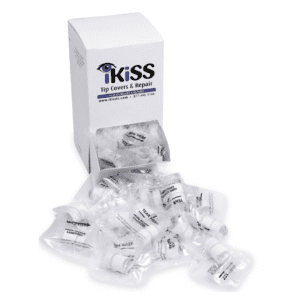
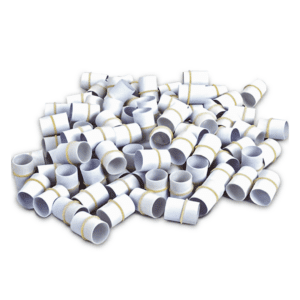
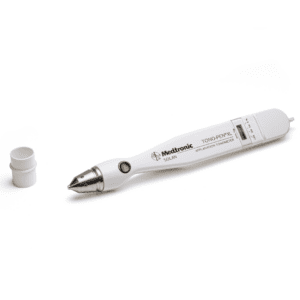
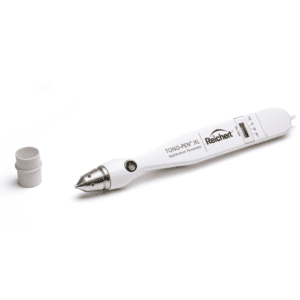
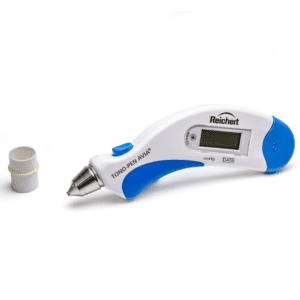
iKiSS is the go-to provider for top-quality refurbished Tono-Pen® Tonometers, Tono-Pen AVIA® Tonometers, Slit Lamps, and Phoropters, offering substantial savings of up to 40%.